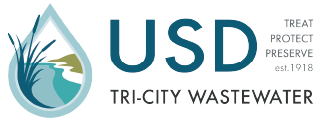Dental FAQ
Why is dental facility requirement not the same across the state?
Water quality standards vary from community to community. The federal Clean Water Act allows states and local communities to establish regulations that are specific to their water quality criteria. Due to the high levels of mercury in the San Francisco Bay Area, all its municipal dischargers were required to have a dental mercury source control program by March 1, 2008.
Why can’t dental offices dispose of chairside traps, empty amalgam capsules and other amalgam waste in the red bag or the garbage?
Red bag waste may require incineration, which volatilizes mercury and it becomes airborne as gas or dust. Once in the air, mercury can fall to the ground with rain, landing on soils or water bodies. If it is disposed of with other garbage, mercury may end up in landfill, which may eventually contaminate groundwater or surface water.
How often should amalgam separators be maintained?
Separators must be maintained according to the manufacturer’s recommendation. Dispose of amalgam wastes in accordance with state and local regulations and by a licensed hauler or recycler of such materials.
Does Union Sanitary District conduct dental office inspections?
USD conducts inspections of dental offices to ensure proper maintenance of amalgam separators and compliance with Best Management Practices for amalgam waste handling as required by Ordinance 36, Section 2.02. Section 4.11 of the Ordinance provides USD the authority to perform inspections of customer facilities for the purpose of ensuring compliance with sewer use requirements. There is no fee for the inspection.

